Birth
1568
Death
1646
Religion
HinduismSant Phulibai Jat is a major historical figure in the Jat community and in the history of devotional literature of north India. The Jat community is an agrarian community that is widespread all over north India as well as other parts of India and the world. The medieval period of India was marked by the spread of devotional poetry from southern to northern India and from the western to eastern India. From the Tamil literature of the 8th century to the Hindi literature of the 18th century, bhakti or devotion was a diverse yet unifying poetic force in India.
Personal Information
Name(s)
Phulibai, also Phulabai in some places
Date and place of birth
Manjhwas village, district Nagaur, Rajasthan, 1568
Death and place of death
Manjhwas village, district Nagaur, Rajasthan, 1646
Family
Mother: Noja
Father: Hemaram Manjhu
Marriage and Family Life
Dhelaji (grandfather, an influential man of the clan), Dungar Ram (younger brother)
Education (Short Version)
Uneducated. She lived in a village. Agriculture was the main occupation.
Education (Long Version)
She received no formal education. The only education she received was her spiritual initiation and constant chanting of the name of Lord Ram. This was done through her guru, who she offered food to when they met during his wanderings. In Bhakti, or devotion, most saints did not have a formal education, sometimes owing to life circumstances, other times as a choice to avoid dependence on the written word and the pride and ego that education may bring. In Bhakti, oral transmission of knowledge and the refinement of consciousness through mindful chanting, as a means of rigorous spiritual training, are considered more important than scholarship.
Religion
Hindu
Transformation(s)
At age twelve, while taking food to the fields, Bhato, Phulibai encountered Sant Gyaniji near the village of Sanju in Nagaur; Sant Gyaniji was a wandering yogi from Haridwar. When he requested food, Phulibai generously offered it to him. In return, Sant Gyaniji bestowed upon her the mantra of Ram-Naam. (Ram-Naam means the constant chanting of the name of Lord Ram; it is a widely accepted and disseminated spiritual practice all over India.) This encounter led Phulibai to become his devoted disciple. Rejecting worldly pleasures, she turned down all marriage proposals and chose a life of celibacy and devotion. Phulibai's spiritual journey flourished during the reign of Maharaja Jaswant Singh I of Jodhpur, who ruled from 1638 to 1678. There is an oral narrative regarding the devotion of the Maharaja to this vernacular woman village sant. It states that the king sought her blessings on his way to a war which she then predicted for him would be victorious. Upon his return, he offered his salutations to her and became her devotee. On our visit to her dham, temple, it was also shared by the mahant, the current spiritual manager, that the king invited Phulibai to his palace and instructed the royal women to consider her their nanad, sister-in-law; the king bowed to her as his elder sister. Upon her visit to the royal quarters and witnessing the indulgences and empty vanities of the women, Sant Phulibai had given them life lessons on reflection and the true end of the human enterprise. She had talked to them about mortality and the fading of the human flesh and the urgent need to preserve devotion as the only way to the divine. This had had a strong effect upon the women, and it is believed that many people from the royal family turned towards Bhakti. Phulibai’s words are a harsh admonition of a life lived without the awareness of truth:
रांम भजो हे रांडडी, àहारो मांन
होसो कालȣ कूतरȣ, कȧड़ा पड़सी कांन
रांडा भांडो फूटसी, कै करȣये ͧसणं गार
या Ǔतसना कै कारण, के ता ͩफरसी लार
रांम ͪवना थे कुती होसो, लाज काणं तन कȧ सब खोèयो
आगै पीछै पड़दा नांहȣ, तब घुंघट को के करांहȣ
O fools, while you can, chant Ram’s name
Lest you end up with a dog’s fame
The ugliness of the body will eventually be seen
Why wrap it in false coverings of perishable sheen
The lust for the world, if now it doesn’t wither
See yourself as a salivating dog thither
Without Ram, your next form may be a hound
What artifice then, what seduction to be found
No shawls and no corsets for a bitch
While its time, make the mindful switch
*All translations in this paper are done by the author. These are the first English language translations of Phulibai’s poetry.
Contemporaneous Network(s)
It is important to note that Sant Phulibai’s name is uttered with great respect among the Ramsnehi followers and masters, but her mentor was not a saint related to the Ramsnehi sampradaya. The Ramsnehi spiritual tradition has a wide and significant presence in the state of Rajasthan and beyond. The Ramsnehi tradition upholds nirakar Ram, or the formless presence of Lord Ram, and weaves its spiritual practices around chanting the name of Ram. By chanting the name of Ram, the soul sheds the burden of memory and purifies itself to merge with the Oneness that has created all.
The Ramsnehis recognize this divinity in the name of Ram alone. It is important to note that there is no animosity or difference between the practices of nirgun sadhana of the Ramsnehis and the saguna sadhana of the Ramanandis. In nirgun sadhana, the name and chanting of the name of Lord Ram are the primary ways of liberation, with the name Ram inscribed in the sanctum of all the temples. In saguna devotion, the deity’s manifested form is prayed to as the form of Lord Ram through elaborate rituals. The two practices are ultimately directed at the feet of Lord Ram, with the Ramsnehis focusing on the liberating potential of chanting as the way to liberation. In the Ramsnehi tradition, the rituals of karmakand, or Vedic rituals, are not elaborate. Rather, the focus is on yogic training of the consciousness. In the poetry compilations of Ramsnehi literature, Phulibai’s name is uttered with great respect, for her devotion to the name of Lord Ram was exceptional. Her guru was a wandering yogi and his panth or sampradaya lineage are not known. Though her spiritual lineage cannot be traced to a guru in the Ramsnehi tradition, it is exceptional that her devotion alone is the reason that she has been co opted into the tradition as a great Ram devotee. From the moment she met her guru, Phulibai became deeply immersed in her devotion to Lord Ram, solidifying her place as one of the most respected spiritual figures of her time. In the literary history of Rajasthan, Phulibai, along with Ranabai and Meerabai, is a significant part of the Bhakti poetic tradition.
less
Significance
The beginning of Bhakti literature–in poems and in verse–by women in north India is attributed to the poetry of Rani Rupande and Sant Toral. They lived in 14th and 15th century Rajasthan and Gujarat respectively. Rupande was a disciple of Megh Dharu and according to oral history, she was also the mentor of her husband, King Malade Rao Mallinatha (ca. 1328/1331), who is referred to as Bhakt Shiromani, or Highest Devotee, in the medieval tradition. The brave actions and teachings of Rani Rupande are preserved in oral history through the singing of royal bards and through historiographers (bhat-s) in the form of Mallinatha-Rupande Katha, a collection of verses celebrating the devotional life of this couple. In the folk devotional history of Gujarat, the names of Rupande and Mallinatha are adjoined with the name of Jesal-Toral; Jesal was a vagabond and robber whose terror reigned in the society and Toral was a pious woman whom he had kidnapped. It is recognised that through the steadfastness and devotional temper of Toral, the man Jesal underwent reform and learned the true meaning of service. Sant Toral was a pious woman whose devotion was the reason for the conversion of Jesal from being a dacoit to a great devotee.
In the 16th century, Sant Meerabai was named Bhakt Shiromani and is still called this to this day. In Nabhadas’ Bhaktamal–the most widely acknowledged hagiography of saints–the only woman sant whose name is mentioned is Meerabai. Her name bears the burden of representing the voice of women in devotion and spiritual quest. However, contemporary translations and scholarly work notwithstanding, Subhadra Desai, in her book The Unfettered Note, has said that Meerabai’s name does not find recognition among the Rajputs of Mewar–her own community–because of her defiance of social norms, such as leaving the home in search of her inner self. In the next century, the name Sant Phulibai became known as a great Ram Bhakta, a devotee of Lord Ram. Her life story and persona have been preserved in the form of Phulibai ki Parchi and some verses of hers have been preserved through individual scholars and archival records. Parchi is the vernacular genre of preserving the history of saints and poets. Phulibai ki Parchi is a documentary historical record of her life.
Works/Agency
Phulibai composed many bhajans, spiritual poems, in her lifetime. Deshraj, in his history of the Jat community, has mentioned that a book of her poems exists in the Marwari language but that researchers could not obtain it. One page of her original composition as Phulibai ki Sakhi, The Poems of Phulibai, was obtained from a research institute’s archives in Rajasthan. Usha Rathod has collated more poems of Phulibai from the archives and has published them in her book Madhyakaleen Kavyitriyon ki Kavya Sadhana, some of which are quoted below:
फूलȣ को परमेæवर जैसो, वेद पुराण न जाणैजैसो । जलम मरण म नांह ɇ ȣ Üयार, सो फूलȣ का Ǔनझ भरतार ।।
Phuli’s divine one is so magnificent and great,
he lies beyond the knowledge of the scriptures
He has rubbed and totally cleaned my personal slate,
I am freed of capturing birth and death’s pictures.
In Phulibai ki Sakhi, The Poems of Phulibai, that we found in the archives of Pratap Shodh Sansthan, or Jodhpur, the following lines of her poems are readable, as also quoted by Usha Kanvar Rathor in her book:
जब लग कहेत (èवास) शरȣर मɅ
तब लग नाम अनेक
घट फुटे सायर ͧमले
जब फुͧल पुरण एक ||१ ||
उचो उचो के कसे
नहेचल कर ले मन
झूगो सर कȧ पगड़ी
माटȣ ͧमलसी तन
Until breath flows in the body
Our names eclipse the truth’s core
In mud will dissolve this body
The name Phuli will come to the fore
Why raise your worldly Self in heights fake
Make your mind pure and free
In the end, the head must a bow make
The body will fall like an uprooted tree
Besides Phulibai ki Sakhi, there is Phulibai ki Parchi (the latter is a biographical record in verse and the former is a collection of verses) that is available in Ramsnehi Sant Sahitya, or saint literature. In Shri Sant Vani (accessed at Ramdwara, Merta, Rajasthan), the researchers found versified hagiography of Sant Phulibai’s life along with her verses. In her verses, there is a clear and repeated emphasis on the “name of Ram” as the means to the liberation of the soul; also, there is clear evocation of the compassion and guidance of the guru:
I followed my guru’s word, I drank the nectar of the name of Ram
Phuli has seen the whole world, she says there is none like Ram
Reputation
In Rajasthan in North India, written records as well as scholarly work on oral histories have been well preserved, much more than other parts of north India. There is a diversity of spiritual movements and lineages including Vaishnav, Nath, and Shaiva traditions. It is also noteworthy that the names and works of women saints have been carefully preserved in community archives and histories here, much more than other places. The historiographical omission of scholarship on Bhakti exists for many reasons, one of which can be traced to Oriental studies of Bhakti, as devotion, through Western epistemological frameworks. In such readings, too much emphasis is laid on denominational categorisations of sampradaya-s and theological hair splitting of saguna versus nirguna or Shaiva versus Vaishnava. The preponderance of certain translations of global importance, such as that of Sant Meerabai and Sant Kabir, often lead to other vernacular or regional histories being left out of the discourse. Sant Phulibai’s name is one amongst many.
Sant Phulibai was well respected for her devotion to god during the ruling period of Emperor Aurangzeb (1618-1707). When Aurangzeb sent Raja Jaswant Singh of Jodhpur (1638-1678) to attack Kabul, a group of saints visited the village Manjhwas. They had discussions on spiritual subjects with Phulibai, and they were so impressed by her discourse that they became her followers (Deshraj, p.609). The influence of Phulibai was so strong on them that they praised her saintliness to Maharaja Jaswant Singh when they went to Kabul and asked him if he had come from the land of Phulibai. Astonished by the name and fame of Phulibai, Jaswant Singh decided to see her in person and he went to her village for this purpose.
Phulibai emerged as one of the great saints of medieval Rajasthan, advocating for a simple path to salvation. She spoke out against meaningless religious practices and rituals, promoting a more accessible spiritual understanding. Her teachings, conveyed in simple and clear language, resonated with the common people, especially the illiterate, making her a significant spiritual figure in the region. She took jeevant samadhi, controlled and wilful death performed by yogis, at the age of 78. Phulibai is held in high regard among the revered poetesses of Marwar.
Legacy and Influence
The head priest, mahant, of Sant Phulibai dham, Saint Phulibai’s temple, observed that Sant Phulibai is now revered as a kuldevi, or clan-deity, of the Manjhwas Jat community. Even among the Jat families that have migrated or live outside the village, Sant Phulibai is considered a deity and clan guru whose blessings are sought on all important life events. The transformation of a saint into a community deity marks the significance of her life’s precepts and teachings, which continue to hold for her people. In Rajasthan, community identities and oral histories have been successful in preserving obscured names like that of Phulibai, whose presence and persona were major during her time.
There is also an annual bhandara, community meal, that is organized at the dham in her name. The community meal is a major social event signifying remembrance, thanksgiving, and reinforcement of kinship bonds amongst people. This is also an occasion for people who have had to migrate out of village life to pardes/pardesh, literally meaning ‘another’s land,’ to return and honor their cultural practices and social codes. In India, the identity of a person is believed to be deeply linked to her des/desh, or homeland, and dharma, or religious and moral duty. Ritual community gathering holds social and cultural meaning for the celebration of spiritual icons, such as a woman saint. Phulibai’s legacy is also marked by material presence through the construction of her dham and her statue.
less
Clusters & Search Terms
Current Identification(s)
Community history (Jat history), Bhakti literature of Rajasthan
Clusters
N/A
Search Terms
Bhakti, medieval, Nirgun, Ram, Marwar, Rajasthan, Jat women, sant, Ramsnehi
less
Bibliography
Primary (selected):
Phulibai, Phulibai ki Parchi, pamphlet, Merta. Source: Ramdwara, Santon ki Vani, personal collection of Ramdwara library, accessed on 2nd April, 2024.
Archival Resources (selected):
Phulibai, Phulibai ki Sakhi, manuscript, Jodhpur. Source: Pratap Shodh Sansthan, document number 4863, accessed on 2nd April, 2024.
Web Resources (selected):
https://www.jatland.com/home/Jat_History_Thakur_Deshraj/Chapter_IX accessed on 5th September, 2024.
Images
The photos have been taken by the author, and TNH has the permission to post them. Pictures 1, 2 and 3 are from Sant Phulibai Dham visited on 2nd April 2024. Picture 4 is a scanned page of Phulibai ki Sakhi obtained from Pratap Shodh Sansthan, Jodhpur.
Acknowledgments:
This research project was funded by the ICSSR.
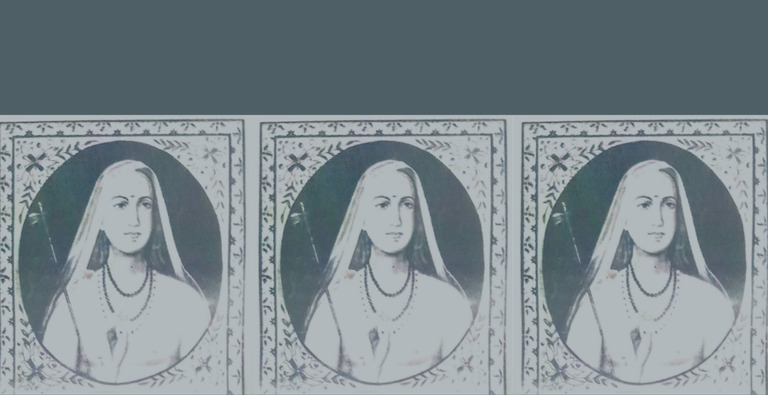
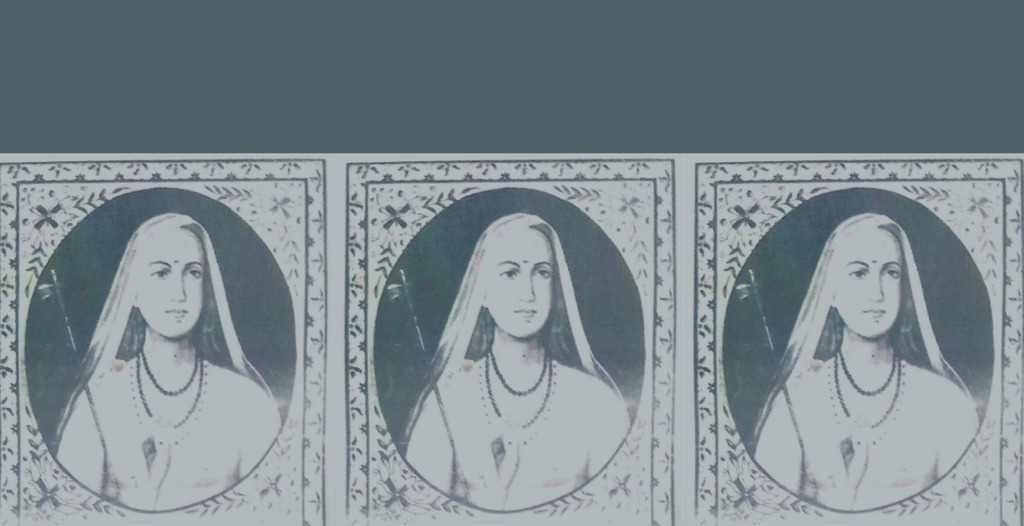
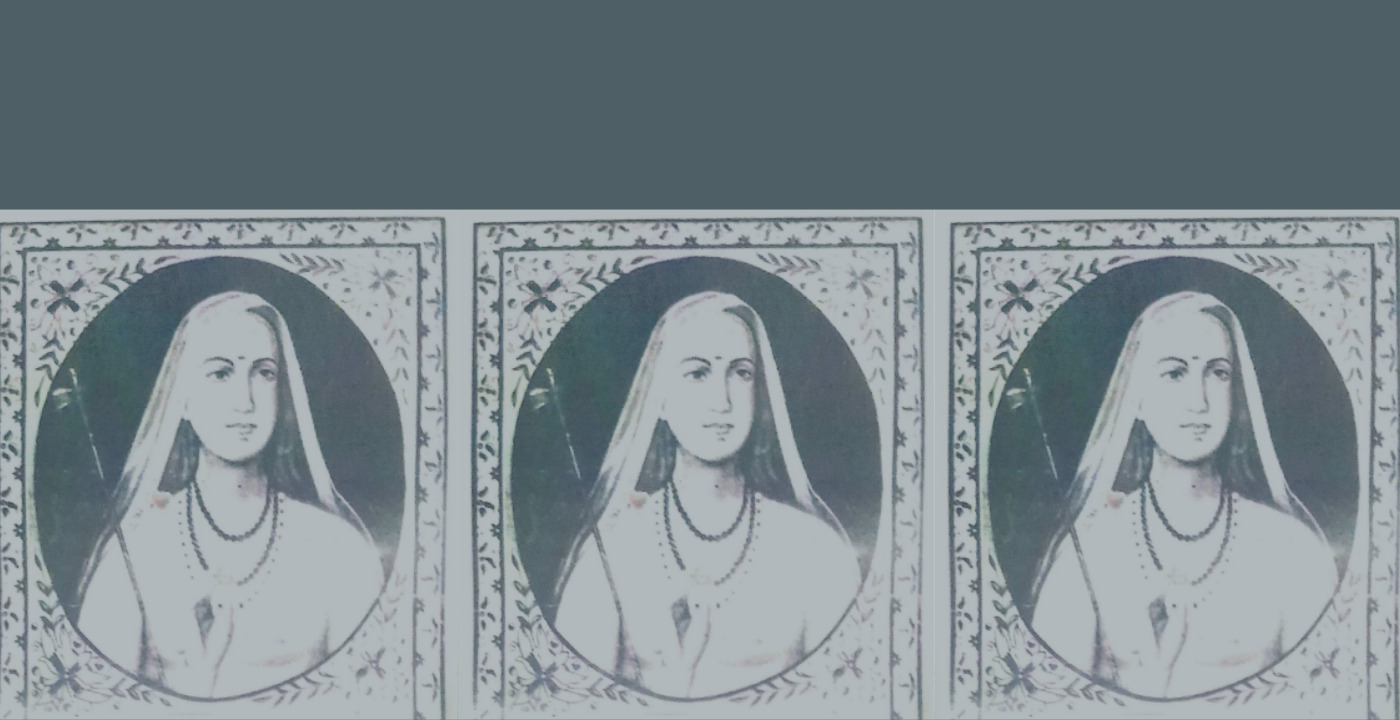
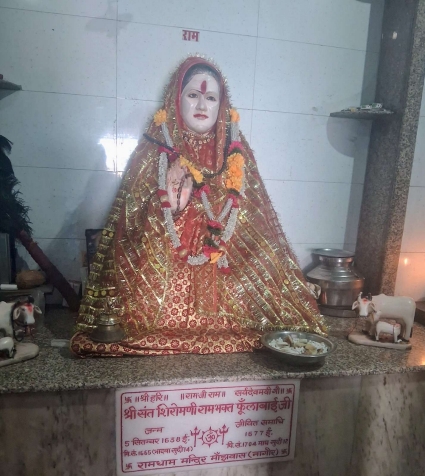
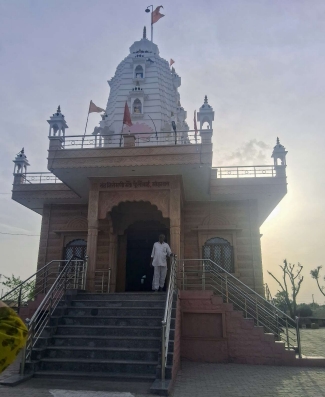
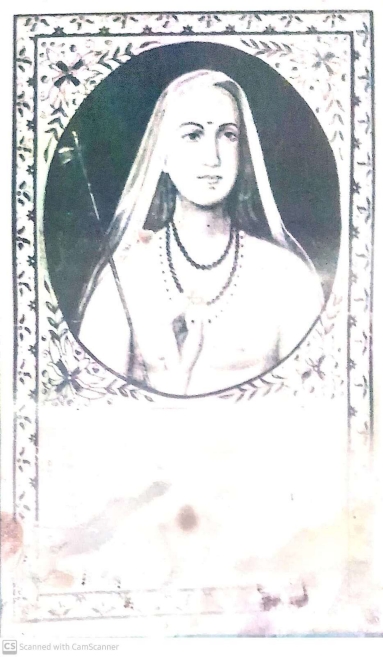
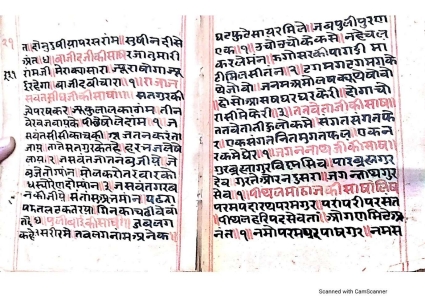
Comment
Your message was sent successfully